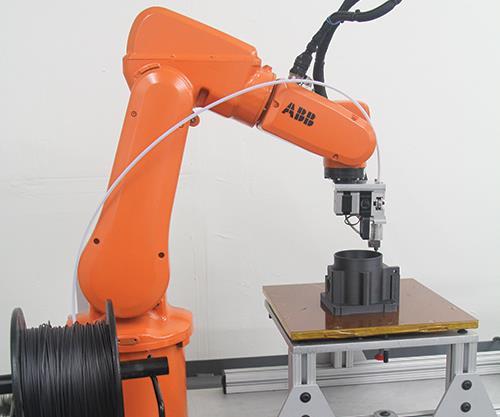Robotics is not as prevalent in aviation manufacturing as it is in car manufacturing. Despite the difference in scale and complexity, robotics can bring the same benefits to aviation manufacturing as it did to car manufacturing. Automating tasks allows for significant cost savings and faster production times. The resulting faster production and delivery times can be used to drive better sales.
There is less wastage as robots supplement the human workforce. With the aid of robots, technicians are able to perform repetitive tasks with constant results. Robots can assist technicians in tasks that put considerable stress on the bodies of technicians like drilling, welding, and fastening. Technicians can therefore work faster and more effectively.
Robots can also reduce the risk of human error. They can be used for the application of paint and coats, with the automation of the process resulting in less waste of materials. Because they are equipped with sensors, robots can be used to inspect components that might have defects. Robots are also useful in material handling, freeing up technicians for other tasks.

Laser Processing in Aviation Manufacturing
Laser processing greatly benefits from automation, adding the precision of robotics with the utility of laser processing. The usual applications for laser processing in aviation manufacturing are material cutting, general welding and hermetic sealing, drilling, and coating. Laser processing is used in the production of small, high complexity components, and for large aircraft parts and components.
- Material cutting – Precise cuts can be delivered through laser processing, ensuring that only what is needed is removed. This in turn leads to less wasted material. This is crucial in the manufacturing of complex components where high precision is required or materials are expensive.
- General welding and hermetic sealing– Lasers weld items at higher temperatures than traditional welding and can deliver consistent welds. With precise application of welds, electronic and optoelectronic packages used by aircraft can be hermetically sealed and protected from harmful interference.
- Drilling – Laser drilling is faster and costs less than traditional mechanical drilling. It is less physically stressful to the operator or robot than a mechanical drill.
- Coating – Lasers can be used to fuse metal coatings to aircraft and satellite components, providing better coating protection.
Precision and Safety Concerns
One major concern that aviation manufacturers had with robotics was precision, and therefore safety. As an example, an imprecise weld on a car’s body may not be a safety concern, but the same cannot be said of an imprecise weld on an aircraft’s skin panel. Aircraft and their components are more complex than cars, and higher levels of precision are required.
However, this view is outdated, based on older generations of robots. Newer robots are more precise and adaptable. With precision motion control solutions using translationor linear stages, a laser processing robot is able to deliver results that meet safety standards. Cutting, welding, or drilling, the laser processing robot will be able to deliver consistent output. With the right motion solution, the desired level of precision is achievable and safety requirements can be met.
With huge production backlogs generally reported within the industry, aviation manufacturing can benefit greatly from robotics and laser processing.



